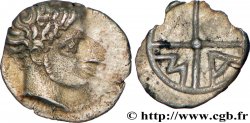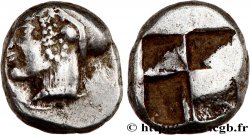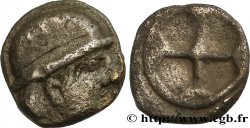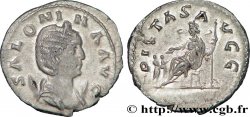Live auction - bga_932696 - MASSALIA - MARSEILLE Litra du type du trésor d'Auriol à la tête d'Athéna coiffé du casque attique
You must signin and be an approved bidder to bid, LOGIN TO BID. Accounts are subject to approval and the approval process takes place within 48 hours. Do not wait until the day a sale closes to register. Clicking on "BID" constitutes acceptance of the terms of use of cgb.fr private live auctions.
Bids must be placed in whole Euro amounts only. The sale will start closing at the time stated on the item description; any bids received at the site after the closing time will not be executed. Transmission times may vary and bids could be rejected if you wait until the last second. For further information check the Live auction FAQ
All winning bids are subject to a 18% buyer’s fee.
All winning bids are subject to a 18% buyer’s fee.
| Estimate : | 400 € |
| Price : | no bid |
| Maximum bid : | no bid |
| End of the sale : | 22 July 2025 16:02:39 |
Type : Litra du type du trésor d'Auriol à la tête d'Athéna coiffé du casque attique
Date: c. 475-460 AC.
Mint name / Town : Marseille (13)
Metal : silver
Diameter : 10 mm
Weight : 0,66 g.
Rarity : R2
Coments on the condition:
Très jolie monnaie sur un flan bien centré, à l’usure fine et régulière. Patine grise
Catalogue references :
Obverse
Obverse legend : ANÉPIGRAPHE.
Obverse description : Tête d'Athéna à gauche, coiffée du casque attique.
Reverse
Reverse legend : ANÉPIGRAPHE.
Reverse description : Carré creux irrégulier.
Commentary
Cet exemplaire est très proche du OBB-1 du Dicomon ; ce type est lui-même indiqué “très proche du type OBA-Ea”.
Cette monnaie s’intègre dans le groupe EaI, répertorié par une seule monnaie dans l’ouvrage de Futwängler.
Dans le RN 2008, page 243, J.-A. Chevillon remet en doute l’appartenance de la monnaie illustrée par Futwängler au trésor d’Auriol ; il date cette monnaie des années 475-460, soit après l’enfouissement du trésor !.
This example is very close to the Dicomon OBB-1; this type is itself indicated “very close to the OBA-Ea type”. This coin is part of the EaI group, listed by a single coin in Futwängler's work. In the RN 2008, page 243, J.-A. Chevillon questions the belonging of the coin illustrated by Futwängler to the Auriol treasure; he dates this coin to the years 475-460, i.e. after the treasure was buried!
Cette monnaie s’intègre dans le groupe EaI, répertorié par une seule monnaie dans l’ouvrage de Futwängler.
Dans le RN 2008, page 243, J.-A. Chevillon remet en doute l’appartenance de la monnaie illustrée par Futwängler au trésor d’Auriol ; il date cette monnaie des années 475-460, soit après l’enfouissement du trésor !.
This example is very close to the Dicomon OBB-1; this type is itself indicated “very close to the OBA-Ea type”. This coin is part of the EaI group, listed by a single coin in Futwängler's work. In the RN 2008, page 243, J.-A. Chevillon questions the belonging of the coin illustrated by Futwängler to the Auriol treasure; he dates this coin to the years 475-460, i.e. after the treasure was buried!








 Report a mistake
Report a mistake Print the page
Print the page Share my selection
Share my selection Ask a question
Ask a question Consign / sell
Consign / sell
 Full data
Full data















